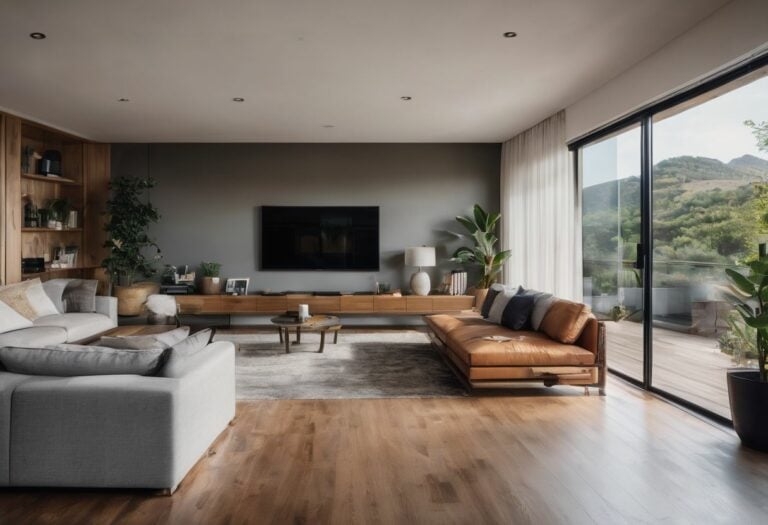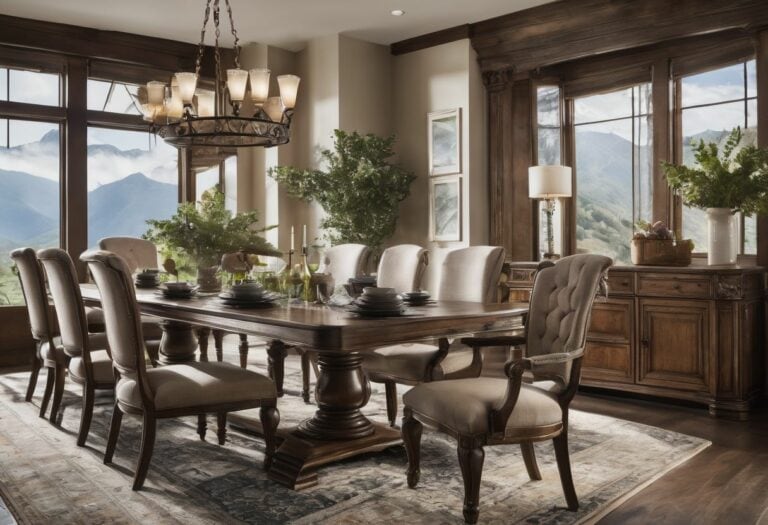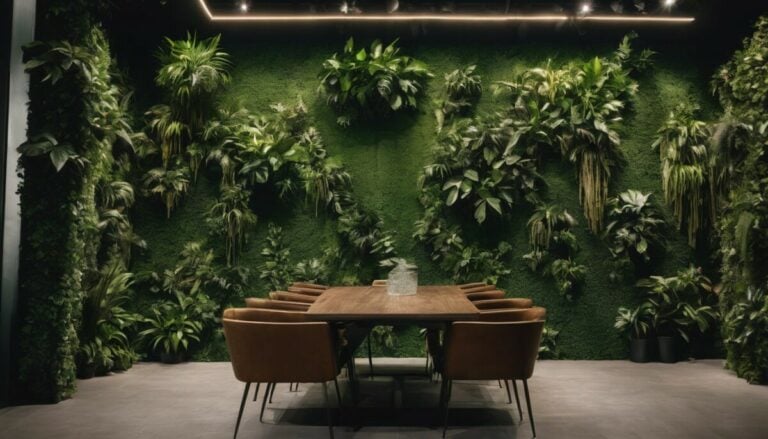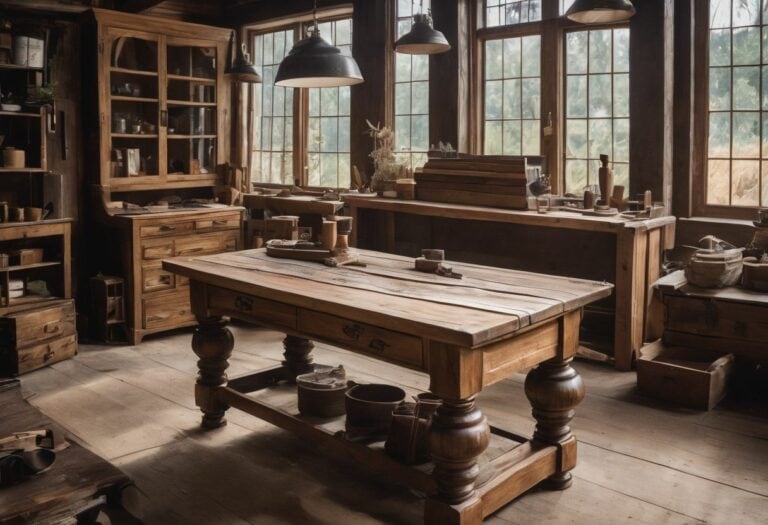Understanding the Difference: Scandinavian vs Minimalist Interior Design
Have you ever looked around your home and felt something was off with the decor? Perhaps it’s a struggle to pinpoint whether your space is more Scandinavian or strictly minimalist.
Identifying the right interior design style can transform a room from dull to inspiring, but understanding the subtle differences between similar styles can be tricky.
One exciting fact about Scandinavian design is its deep roots in natural light — this means spaces are often bathed in brightness that brings an airy feel indoors. This blog post will guide you through distinguishing Scandinavian from minimalist design, helping to clear up any confusion and ensuring that your living space truly reflects the vision you have in mind.
Ready for a clearer view on interior styling? Keep reading!
Defining Scandinavian Design

Emphasis on light and nature
Scandinavian design loves light. In places where the sun doesn’t shine much in winter, bright spaces are a must. This style uses big windows and mirrors to make rooms look larger and brighter.
White walls reflect light, making everything feel open and airy. It’s like bringing a bit of the sky inside.
This design also brings nature into homes with natural materials. Floors might be hardwood or covered with hemp rugs for a touch of warmth. Furniture often has clean lines but is made of wood that shows its natural grain.
Woven baskets add storage while keeping with the natural theme. Plants are common too, giving a fresh pop of green and cleaning the air naturally.
Quality craftsmanship means every piece not only looks good but lasts long too. This makes it better for our planet as it cuts down on waste.
Functional furniture with clean lines
Furniture in the Scandinavian style is all about being simple and useful. It has clean lines and shapes that make your home look neat and tidy. People like it because you can use it in many ways, not just one.
This kind of furniture often mixes the beauty of wood with a design that fits right into daily life.
Think of a chair that’s easy to move but also feels good to sit in, or a table that looks plain but is very strong. We see this kind of design in things like curved wooden chairs which are both pretty and comfy.
It’s great for making any room feel open and calm without too much stuff everywhere.
Scandinavian pieces keep your space looking fresh while giving you what you need in a home. They help create places where friends want to hang out, everything finds its place, and there’s still room for fun.
That’s why lots of people enjoy having this type of simple yet useful furniture around.
Exploring Minimalist Design
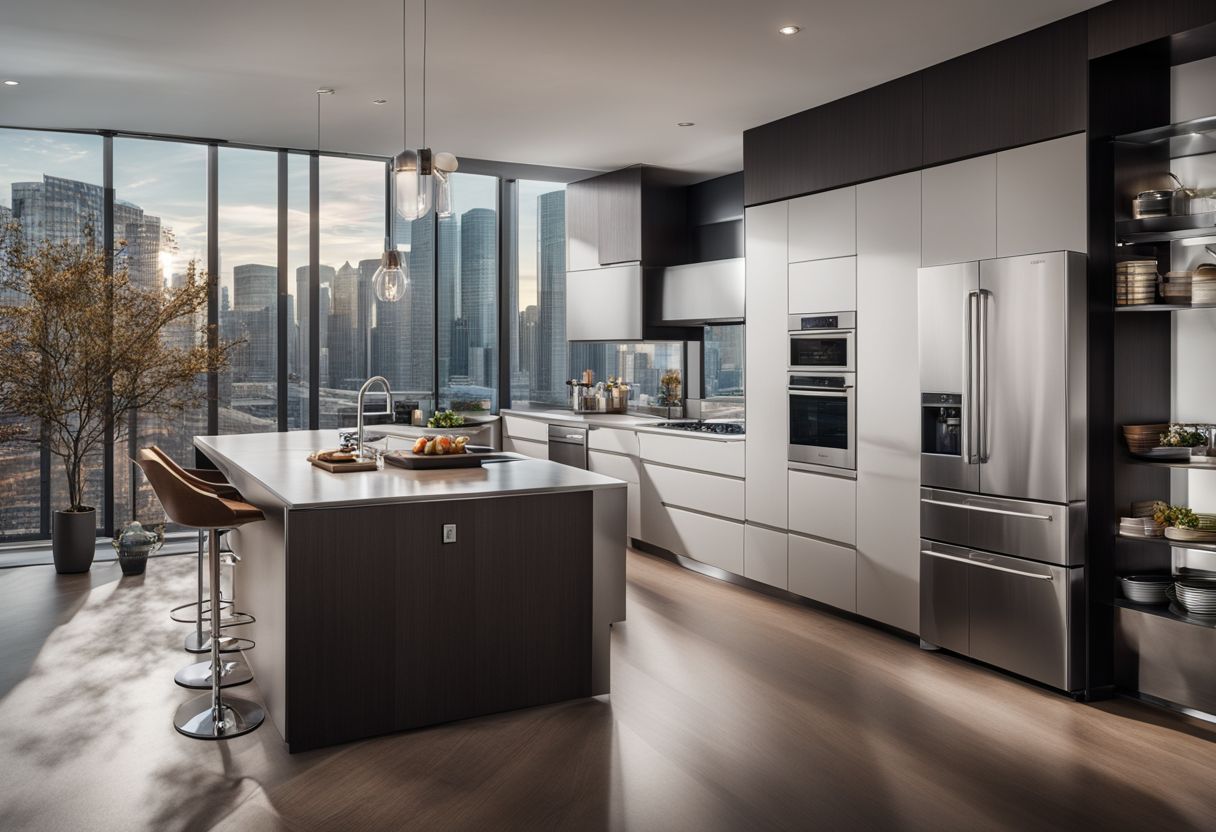
Minimalist design focuses on the principle of “less is more,” using industrial materials and a monochromatic palette to create clean, simple spaces. The emphasis is on geometric forms and a sense of openness, reflecting an intentional choice to reduce clutter and promote a sense of calm.
The art of less is more
Having less stuff means more space and freedom. Minimalist design teaches us this important lesson. You pick only what you need in a room, just the basics, but you make sure they are good quality.
It’s not about having empty spaces. Instead, it’s about choosing things that work well and look nice together.
Think of a room with white walls, a comfy sofa, and one beautiful painting on the wall. There is no clutter to stress you out or clean up all the time. The few pieces you have can also be easier to enjoy when there isn’t so much around them fighting for your attention.
This idea helps keep your home calm and peaceful.
Use of metals and monochromatic palettes
Minimalist design often incorporates metals like stainless steel and chrome, along with a simple color palette. This creates a clean and polished look that aligns with the “less is more” philosophy of minimalism.
On the other hand, Scandinavian design emphasizes wood and softer textures instead of metals. Additionally, it embraces simplicity and clean lines while using monochromatic palettes sparingly to maintain a sense of warmth and coziness in interior spaces.
Scandinavian design tends to steer away from the starkness associated with an all-metal, monochromatic approach. While both styles favor simplicity, their material choices and color schemes diverge significantly – one preferring natural elements and varied tones, the other opting for high-shine finishes and limited hues.
Personal Reflections: Why I Stopped Being a Minimalist
I used to adore the clean and uncluttered aesthetic of minimalism. However, as time went on, I began to feel that my living space lacked warmth and personality. Minimalist decor can feel dull and generic after a while.
It seemed void of any real human expression, which made my home seem impersonal.
The minimalist style is focused on simplifying living spaces, emphasizing clean lines, and promoting open spaces. While these are great goals in principle, I realized that they didn’t fully align with my personal preferences for a cozy and welcoming home environment.
So gradually, I transitioned towards incorporating elements of Scandinavian design into my living space instead.
Key Differences Between Scandinavian and Minimalist Design
Scandinavian design often incorporates natural elements and a more colorful palette, while minimalist design tends to favor monochromatic colors and sleek metal accents. Additionally, Scandinavian design embraces warmth and coziness, drawing inspiration from the natural environment, whereas minimalist design is characterized by its stark simplicity and focus on functionality.
Material choices and color schemes
Scandinavian design often embraces natural materials like wood and hemp, resulting in a warm and cozy atmosphere. In contrast, minimalist design tends to favor metals such as steel and chrome, adding a sleek and modern feel to the space.
When it comes to color schemes, Scandinavian interiors lean towards light, muted tones that reflect natural light, while minimalism typically features monochromatic palettes with bold accents for visual impact.
These differences in material choices and color schemes contribute significantly to the distinct aesthetics of Scandinavian and minimalist interior design.
Overall aesthetic and cultural origins
Scandinavian design draws inspiration from the natural landscapes and cultural traditions of Nordic countries. It embraces simplicity, functionality, and a connection to nature, reflecting the region’s emphasis on light and calmness.
The use of natural materials such as wood and bright color palettes reflects the Scandinavian tradition of bringing the outdoors inside. On the other hand, minimalist design focuses on an aesthetic of minimalism influenced by Japanese architecture and concepts like wabi-sabi.
It emphasizes clean lines, monochromatic colors, and a reduction in clutter to create serene living spaces that promote mindfulness.
Conclusion
In conclusion, Scandinavian and Minimalist interior designs share similarities in their emphasis on simplicity and functionality. However, they diverge in material choices, color schemes, and overall ambiance.
While Scandinavian design leans towards natural materials and warm, cozy atmospheres, Minimalist design favors monochromatic palettes and sleek minimalism. Understanding these differences can help individuals tailor their home decor to reflect their personal preferences and lifestyles.
By recognizing the unique traits of each style, homeowners can create spaces that resonate with their individual tastes while embracing the principles of both Scandinavian and Minimalist design.
For a more personal take on these design philosophies, read about my journey from minimalism to embracing other styles.
FAQs
1. What’s the main difference between Scandinavian and minimalist interior design?
Scandinavian design comes from the Nordic region and focuses on warmth, natural lighting, and cozy materials, while minimalist design is all about having less stuff to create a clean and simple space.
2. Do Scandinavian designs use certain colors or patterns?
Yes, Scandinavian designs often have light colors that make rooms feel bright, and sometimes they include geometric patterns for a little bit of fun in the decor.
3. Is wood important in Scandinavian home decor?
Wood is very much loved in Scandinavian homes because it brings nature inside and adds warmth to their spaces.
4. Can minimalism help me feel more relaxed at home?
Minimalism can make your house feel calm since there’s not much clutter around. It’s like meditation for your room!
5. Did any famous designers help make these styles popular?
Indeed! Alvar Aalto from Finland helped shape what we know as Scandinavian design by making beautiful furniture that feels good to use.


